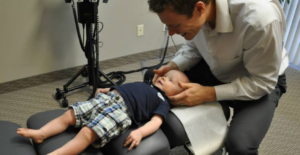 Our goal is to educate you! Read this article about exorbitant hospital bills. You have options! Ask for help. PS – 2nd lesson. Don’t ignore those heart attack symptoms. Take action!
Our goal is to educate you! Read this article about exorbitant hospital bills. You have options! Ask for help. PS – 2nd lesson. Don’t ignore those heart attack symptoms. Take action!
Seat Check Saturday
 Car crashes are a leading cause of death for children ages 1 to 13. That’s why it’s so important to choose and use the right car seat correctly every time your child is in the car. Click here to visit the National Highway Traffic Safey Administration site: Find the right seat; Install the seat correctly; Register the seat for recalls/updates; Location for a professional to check the seat; Other resources.
Car crashes are a leading cause of death for children ages 1 to 13. That’s why it’s so important to choose and use the right car seat correctly every time your child is in the car. Click here to visit the National Highway Traffic Safey Administration site: Find the right seat; Install the seat correctly; Register the seat for recalls/updates; Location for a professional to check the seat; Other resources.
4 Ways to Thrive As We Age
 When I heard September is Healthy Aging Month, my first thought was that every month should be healthy aging month. After all, every day, every one of us gets older.
When I heard September is Healthy Aging Month, my first thought was that every month should be healthy aging month. After all, every day, every one of us gets older.
Growing older can hit you with a smack or sneak up behind you. One day you wake up, look in the mirror and see someone you might not recognize. You’re getting older and you find yourself asking questions like:
- What is my purpose here?
- Is this really all there is?
- Now what?
- Who am I?
“Our culture tries to tell us how to move through time and tell us we only have so much time left.” Dr. Christiane Northrup suggests rewriting the script by realizing chronological age just measures time, and by calling it getting older, not aging. “Getting older is inevitable, but aging is optional,” she writes.
Unlike our parents and grandparents, we are a new generation creating our own paths, experiences and futures as we age. For many, each stage of life, is truly a new beginning or it can be if you learn to challenge what you’ve been told and learn to have a positive mindset about getting older.
I cringe when I hear someone say, “I’m too old to do _______.” When I hear those words, it feels as if they have turned their back on all those experiences, all the knowledge they’ve gained, and the successes and talents they’ve earned. Many of us still have 20, 30 or even 60 years of life left. And while we may be finding that priorities are shifting or roles from earlier stages no longer fit, we still have so much more to offer and give.
Following are some ways to help you question, challenge and change your mindset and limiting beliefs when it comes to growing older.
- Let’s Stop Calling Midlife A Midlife Crisis
We’re shifting gears – entering a new phase. Midlife is a time of new opportunities. Many of us at this phase in our lives are living our best life due to medical advances, diet, exercise, and other new treatments. This is not a crisis!
“People may call what happens at midlife ‘a crisis,’ but it’s not. It’s an unraveling – a time when you feel a desperate pull to live the life you want to live, not the one you’re ‘supposed’ to live. The unraveling is a time when you are challenged by the universe to let go of who you think you are supposed to be and to embrace who you are.” ~ Brene Brown
- Claim Your Strengths And Qualities
Name three strengths or qualities you possess. Think about how you can boost them. How can you use this strength more in your life/work/relationships/future? Where could you use this strength to make a difference in your life? How could you turn this strength into an opportunity?
We must continue to transform ourselves. It’s never too late to become a more polished version of your previous self. Take a look at your personal achievements. Celebrate and recall your successes and the moments when you didn’t think you’d make it but you did. What strengths, talents, knowledge did it take? In other words, what did you bring to the table to make it happen? Believe in your abilities!
How does it feel to focus on your strengths? What did you notice about yourself? How could you bring more of that into your everyday life?
- Do Something New
When is the last time you made a deliberate change in your life or started a new routine?
Doing the same things over and over can be emotionally draining. If things aren’t what you think they should be, if you want your life to be different as you get older, you have to make it different. Subtract an activity that’s bringing you down and add in an activity that will bring you up.
Break routines. Challenge yourself. Shake things up. Test your limits. People get stuck in ruts. Don’t keep trying the same thing to get unstuck – try something different and keep trying different things until you find the perfect fit. Expand your comfort zone and watch what happens.
Growing older is a time for renewal. It’s never too late to change the course of your life and act the way you want to feel. Use your experiences, your knowledge, your resources to reclaim, reimagine and reinvent your life, your purpose and your relationships.
Make a list of things you always wanted to do and go do them. See if you like it. Have you always wanted to learn to paint, drive a fast car, run a 5K,, take a creative writing class or take dance lessons? Give it a try. You may be surprised at how exciting some of these new adventures can be or where they might lead you. Embrace the “you only live once” attitude.
What will you try this week?
- Invest in your physical and mental health.
Stop focusing on your newest ache or pain. Instead practice having a positive mindset about by focusing on what your body can do. Exercise, hike or give yoga a try.
Cardiovascular exercise improves your heart and mood. Lifting weights helps retain muscle and bones. Doing the newspaper’s crossword or Sudoku puzzle, writing poetry, and playing games help you retain cognitive function.
It’s Time to Challenge Your Limiting Beliefs
I invite you to challenge your limiting beliefs and put them to the test. Many people in their 40s, 50s, 60s, 70s and beyond reclaim, reimagine and reinvent their lives quite successfully.
Don’t relegate the rest of your life to the boring status quo, living in fear and eventual regret. Take a chance on yourself and follow your dreams. You’ll be surprised at what you can achieve.
There are 2 ways to view your life as you grow older. You can either feel pretty miserable that you are aging – “the best is over” and “it’s all downhill.” Or… You can embrace the changes you are going through and simply enjoy the next chapters of your life and the unique experiences they offer. The choice is yours.
~~~~~~~~~~
Marilyn Carlstead, M.A., the Reclaim Your Life Expert, is a life coach who specializes in midlife, divorce and other life challenges. Bringing over 30 years of experience as a psychotherapist and certified divorce mediator, she specializes in working with women who believe midlife is the perfect time to push the “do-over” button, turn the page and begin an exciting new chapter of their lives. Learn more at: www.SayYesToWhatMatters.com.
Clean Hands Week
Here’s a funny look at a serious subject! Please watch and see if you can change your habits!
School Backpack Awareness Day
 Did you know nearly 5,000 emergency room visits each year are the result of injuries related to backpack usage. The most common injuries being sprain/strains and subluxations potentially resulting in significant back pain. Some, if not most, of these injuries are preventable with proper usage/wearing. Here are a few things to consider.
Did you know nearly 5,000 emergency room visits each year are the result of injuries related to backpack usage. The most common injuries being sprain/strains and subluxations potentially resulting in significant back pain. Some, if not most, of these injuries are preventable with proper usage/wearing. Here are a few things to consider.
Backpacks are designed to be wore as high up on the back as possible with little to no slack between the surface of the backpack and the back. This allows for proper weight distribution which is key.
As a general rule of thumb, the entire weight of the pack should not exceed 20% of the persons body weight. This is vital especially with younger individuals.
Features of the backpack can enhance the ergonomics as well: Padded shoulder straps, lumbar pad, larger pockets closest to the individuals back, roller packs, etc. can make the stress of the pack less on the back.
In general, a good, quality pack along with proper usage can make a big difference on the individual wearing it. Should you have any questions regarding wearing/using a backpack please don’t hesitate to ask a health care professional you trust.
Article written by Dr. Eric Garst, owner of The Well Chiropractic Clinic. Dr Eric has been a chiropractor for 5 years. He’s accepting new patients. Go check out their website today!
- « Previous Page
- 1
- …
- 46
- 47
- 48
- 49
- 50
- …
- 60
- Next Page »
